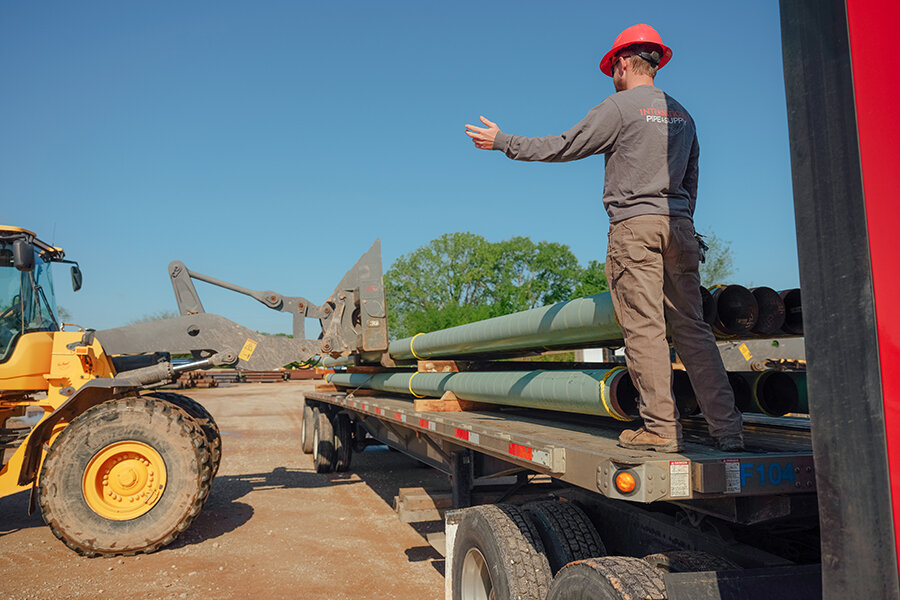The installation of underground pipe is essential for various industries, including construction, water management, and telecommunications. However, traditional methods of pipe installation often involve digging large trenches, which can be disruptive, costly, and time-consuming. Trenchless technology offers a modern solution that minimizes surface disturbance while maintaining efficiency and reliability. This guide breaks down trenchless methods of pipe installation in an easy-to-understand way, exploring how they work, their advantages, and where they are most commonly used.
What Are Trenchless Methods?
Trenchless methods are innovative techniques for installing or repairing underground pipe without the need for extensive excavation. Instead of digging up long stretches of land, these methods use specialized equipment to create tunnels or access points beneath the surface. This approach not only saves time and money but also significantly reduces environmental impact and surface disruptions.
There are two main categories of trenchless technology: pipe installation and pipe rehabilitation. While installation involves laying down new pipe, rehabilitation focuses on repairing or upgrading existing pipelines. For this guide, we’ll focus on the installation techniques that have revolutionized industries worldwide.
How Do Trenchless Pipe Installation Methods Work?
The core concept of trenchless pipe installation is to minimize the surface area affected during the process. Instead of opening a large trench, small entry and exit points are created at strategic locations. Through these points, machinery drills or pulls pipe into position beneath the surface.
One common method is Horizontal Directional Drilling (HDD). In this process, a drill bit creates a tunnel following a predetermined path, guided by precise measurements and technology. Once the tunnel is complete, the pipe is pulled or pushed into place. This method is particularly useful for crossing obstacles such as roads, rivers, or urban areas where excavation would be impractical.
Another technique is pipe jacking or microtunneling, which involves using a hydraulic jack to push pipe segments into the ground while simultaneously excavating soil. This method is ideal for larger pipe and more challenging soil conditions.
The Benefits of Trenchless Technology
Trenchless methods offer a wide range of advantages over traditional pipe installation techniques. One of the most significant benefits is reduced surface disruption. For projects in urban areas, this means less traffic congestion, fewer disruptions to businesses, and minimal impact on landscapes.
Another major advantage is cost-effectiveness. While trenchless technology may have higher upfront costs for equipment and expertise, it often results in lower overall project costs due to faster completion times and reduced expenses for surface restoration.
Environmental impact is also a key consideration. Trenchless methods minimize the need for extensive excavation, which means less soil displacement and reduced damage to ecosystems. This makes trenchless technology a more sustainable option, especially for projects in sensitive areas.
Applications of Trenchless Pipe Installation
Trenchless technology has become a game-changer in various industries. In urban settings, it’s commonly used for installing water, sewer, and gas pipelines without disrupting city life. Utility companies rely on trenchless methods to lay underground cables and fiber optic lines, ensuring minimal impact on existing infrastructure.
In rural and environmentally sensitive areas, trenchless methods are invaluable for preserving natural landscapes while installing pipelines for irrigation, drainage, or utilities. These methods also shine in areas with challenging terrain, such as beneath rivers or highways, where traditional trenching would be impossible or prohibitively expensive.
Choosing the Right Trenchless Method for Your Project
Selecting the best trenchless method for your project depends on factors such as soil type, pipe material, and project scope. Horizontal Directional Drilling is often the go-to option for small to medium-sized pipe and areas with various obstacles. For larger pipelines or projects requiring extreme precision, pipe jacking or microtunneling may be more suitable.
Working with an experienced contractor is essential to ensure the success of your project. A reliable supplier like International Pipe can provide high-quality materials and expert guidance to help you achieve the best results with trenchless technology.
Learn more about trenchless pipe installation and explore International Pipe’s selection of high-quality pipe. Our team is ready to support your next project with the expertise and materials you need to succeed.

